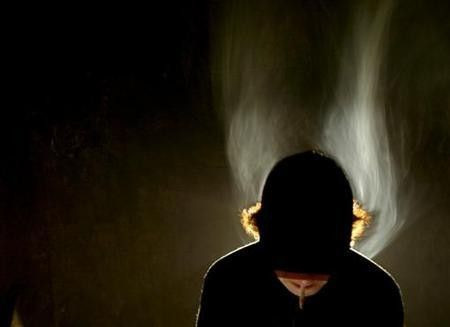Casual smoking rises among U.S. students: study

U.S. high school students are unlikely to be heavy smokers, but casual and occasional smoking is on the rise, according to a new study that warns even light smoking poses health risks.
Researchers found that occasional smoking among teens rose from 67.2 percent in 1991 to 79.4 percent in 2009, while heavy smoking fell from 18 percent to 7.8 percent.
"We're seeing a broad national phenomenon," said Dr. Terry Pechachek, a study co-author from the Centers for Disease Control.
"With fewer cigarettes, the price effect, smoke-free policies and a change in the broad public awareness of risk, the heaviest patterns of use are becoming very rare," Pechachek said.
But he warned against assuming that moderate smoking is safer in the long-run.
"It is important to note that light and intermittent smoking still has significant health risks," Pechachek explained. "We think there may be an emerging pattern. We may be creating a new type of smoker that may be more durable, that are adapting to smoke-free environments and to changing social norms."
Pechacek said that the high percentage of intermittent teenage smokers is unacceptable. Teachers and parents should not downplay the risks.
"It's still a very risky behavior. We want to get across to people that although this is a positive trend, it's very unacceptable to have so many children exposing themselves to something so addictive. The greatest danger is minimizing the risk."
The study, which is published in the American Journal of Preventive Medicine, defined heavy smokers as people who smoke 11 or more cigarettes a day. Moderate smoking was defined as between 6 and 10 cigarettes a day, while light smoking was from one and five cigarettes a day.
Between 14,000 and 16,000 students a year participated in the study by answering a national survey about their smoking and health habits.
Bucking the overall trend, the percentage of Hispanic high school students who are heavy smokers rose from 3.1 percent to 6.4 percent, which Pechachek said could be a byproduct of Hispanic families assimilating to American culture.
"I don't think we fully understand that," Pechachek said. "The U.S. Hispanic population have been lighter smokers in general, but it's possible that as more Hispanics are moving forward in the middle class, Hispanics are becoming more like everybody else. It's not proven, but that is something we are looking at."
HEALTHLIFESTYLE
© Copyright Thomson Reuters {{Year}}. All rights reserved.





















